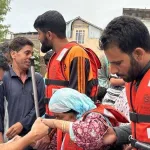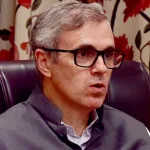PART – 1
PROF. (DR.) SYED AMIN TABISH
Humans have been struggling for better quality of life for hundreds and thousands of years. The journey from the jungle -where ‘survival of the fittest’ was the rule- to modern human societies has progressed to a stage where ‘survival of the weakest’ is the main human value today. The absolute dominance of few individuals, who treated people as ‘subjects’ without any rights, could not continue for long. Last few centuries have witnessed several social revolutions such as French, American, and Russian revolution which changed the social, economic and political structure of the societies around the world, and the rights of every human have been recognized.
Despite many efforts, large inequalities still exist between and within countries. Life expectancy at birth varies from nearly 51 years in Chad to 84 years in Japan. In Indian states also it varies from about 68 years in Assam to 77 years in Kerala.
Max von Pettenkofer (1818–1901), a German physician, had advocated that environment and host factors play an important role in disease causation besides the agent. This line of thinking was later denoted as the ‘Epidemiological Triad’. This idea of the Triad found reflection in the first text book of epidemiology by Stallybrass in 1931 in Liverpool, UK. The occurrence of disease due to the loss of equilibrium between Agent, Host, and Environment has now been accepted unequivocally as the theory of disease causation.
Rudolf Virchow (1821–1902), who is regarded as the father of social medicine, outlined the power of social policies in disease prevention; he said “Medicine is a Social Science and Politics is nothing but Medicine at a larger scale.” He practiced social medicine; would be seen at the barricades. As member of Municipal Council of Berlin, he worked towards modern water and sewerage system for the city. Later on, Thomas McKeon (1912–1988), a Professor of Social Medicine in Edinburgh, empirically showed that rise in overall standard of living, especially nutrition status, resulting from better economic conditions was responsible for the decline in mortality. He also highlighted the role of social policies in health development in his book ‘Introduction to Social Medicine’.
Hugh R Leavell and Edwin G Clark from Harvard and Columbia Universities respectively elaborated in their book ‘Preventive Medicine’ in 1965 that prevention does not only mean prevention of disease and promotion of health but it also includes the prevention of disability and death by early diagnosis and treatment, thus laying the foundations of preventive medicine. Application of these ideas has played a key role in increasing the life expectancies at a lower income level in developing countries due to the large scale implementation of appropriate technology under the primary health care strategy such as immunization, oral rehydration therapy etc. Samuel H Preston, a Professor of Demography and Sociology in University of Pennsylvania, presented analysis of the mortality trends all over the world in 2007 to find out why mortality declines have occurred especially in the later half of the 20th century. He concluded that no doubt the rise in incomes has led to rise in life expectancies but technological changes in medicine have played an important role. These ideas of social medicine and preventive medicine played a significant role in the life and work of Sidney L. Kark (1911–1998) who successfully practiced community medicine in South Africa for a number of years before moving on to Israel and USA.
The importance of population-based approaches was highlighted by Professor Geoffrey Rose (1926–1993) from London School of Hygiene and Tropical Medicine. According to him, “the primary determinants of disease are mainly economic and social and therefore its remedies must also be economic and social medicine and politics cannot and should not be kept apart.” The Public Health approach, which had led to the enactment of Public Health Act of 1948 in England, once again came to the fore.
The focus of right to ‘health’ continued to be only on the right to ‘healthcare’ because in the current era of falling mortality and rising morbidity, the healthcare needs have become the ‘felt need’ of the people. India is also experiencing epidemiological transition. Non-communicable diseases are on the rise whereas communicable diseases (NCDs) also continue to be a public health problem and the agenda of high maternal and child mortality has not yet been tackled.
With technological advancements, the cost of healthcare is rising. People have to pay heavy fee for medical care from out-of-pocket not only when they avail medical services from private sector but also for services available in the public sector medical institutions. According to National Sample Survey Organization 71st survey round the average cost of hospitalization per case (in 2014) was Rs. 16,956 and Rs. 26,455 respectively in rural and urban area. The health workforce per 10,000 was 11.8 in rural area and 42 in urban areas.
(To be continued…)
(The Author is FRCP (London), FACP, FAMS, FRCP (Edin), MD HA (AIIMS), FRIPH (England), Fellow New York Academy of Sciences, Postdoctoral Fellowship, Faculty of Medicine University of Bristol (England), Doctor of Education in Educational Leadership (USA). Email: [email protected])





